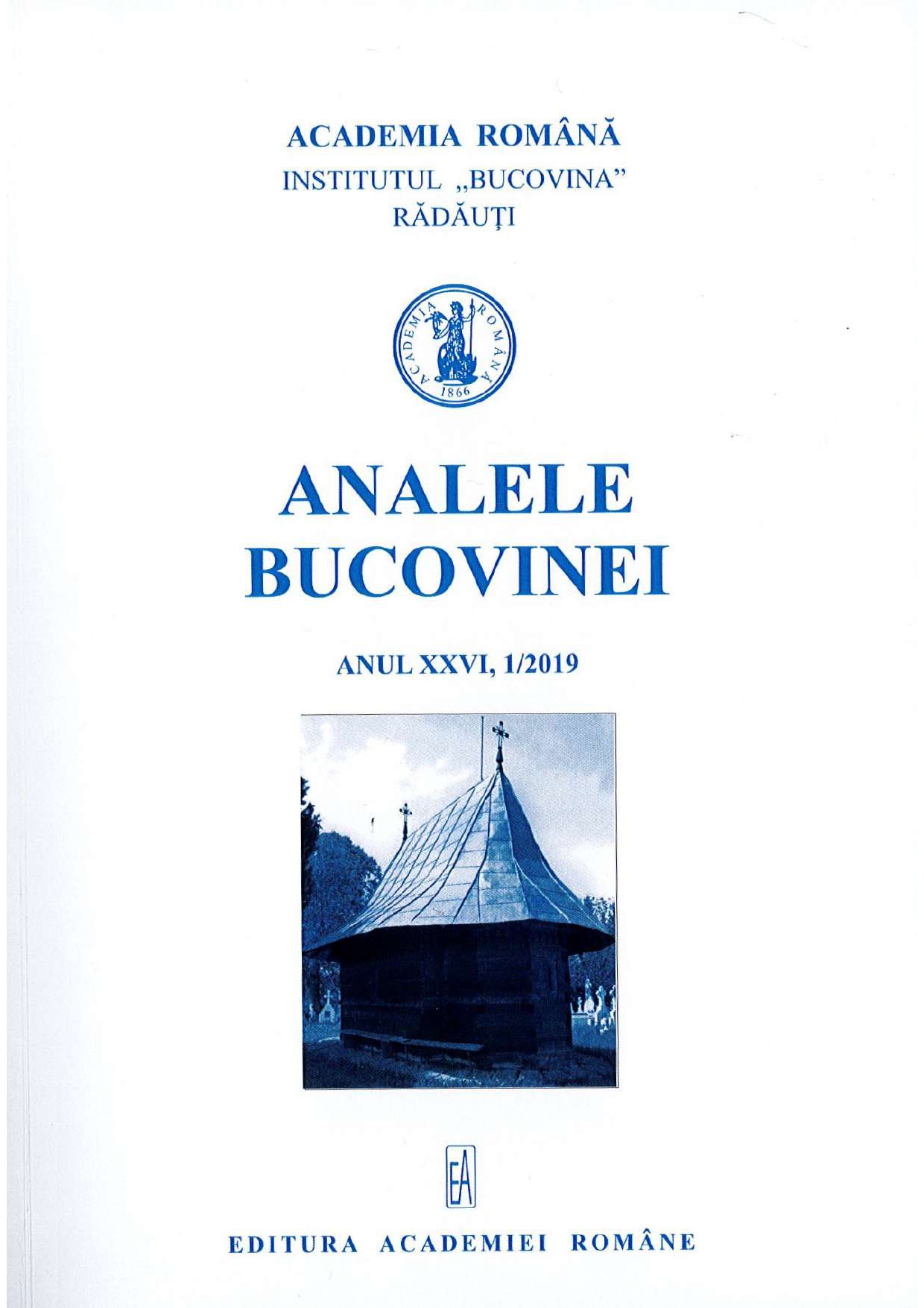RECEPTAREA CURENTELOR, DIRECŢIILOR ŞI TENDINŢELOR DIN FOLCLORISTICA ROMÂNEASCĂ ÎN BUCOVINA (I)
The Reception of the Movements, Directions and Trends
of the Romanian Folkloristics in Bukovina(I)
Author(s): Elena PascaniucSubject(s): Cultural history
Published by: Editura Academiei Române
Keywords: Romanian folklore; movements; directions; schools; representatives; folklorists from Bukovina;
Summary/Abstract: The ideas and tendencies of modernizing the Romanian society advanced by the scholars of the Romanian territories in 1848 and after wards had a national character of enlightening and romantic inspiration. Three of the cultural objectives promoted by Romanian scholars – the exploration of the past invested with ethical value for contemporaries; the pleading for an original national literature inspired by Romanian realities and folk creations; the collecting of folk literature expressions – are closely related to the realization of the “notable theoretical beginnings” in the field of Romanian folklore. An important role in the development and evolution of the Romanian folklore school had Vasile Alecsandri, as an enthusiastic representative of the romantic trend. The basics of the Romanian comparative scientific folklore are due to the encyclopedic scholars Al. I. Odobescu and B. P. Hasdeu. The methodology and the working tools they have imposed on the act of collecting folkloric materials have put the first step towards the scientific legitimacy of the entire group of ethnological sciences. The work and activity of Ovid Densusianu remain decisive for the Romanian folklore in the first half of the 20th century. As a trendsetter in his methodological conception, he predicts the study of folklore in close connection with philology and the necessity of comparing Romanian folklore with foreign folklore. The orientations proposed by Nicolae Iorga, the sociological school founded by Dimitrie Gusti (focused on the writing of rural monographs) and the one founded by Constantin Brăiloiu, the creator of the Romanian ethnomusicology, are also decisive for the evolution of this research field. In the particular case of Bukovina, the arrival of the revolutionaries from Moldavia and Țara Românească in Chernivtsi, the national-cultural emancipation, the collection and valorization of the folk creation, the constant work of Vasile Alecsandri, who wrote folklore articles and collected folk songs and poems for the first two Romanian periodicals which appeared in Chernivtsi – all that was a powerful impetus for awakening interest in the field of folklore. I. G. Sbiera, Simion Florea Marian, Dimitrie Dan, Elena Niculiţă-Voronca remain the reference names for folklore in Bukovina, as they have also inspired generations of folklore collectors. Their affiliation with folkloric movements or schools that have contributed to the affirmation of Romanian folklore as an independent science is analyzed in the following article.
Journal: ANALELE BUCOVINEI
- Issue Year: 52/2019
- Issue No: 1
- Page Range: 181-201
- Page Count: 21
- Language: Romanian

